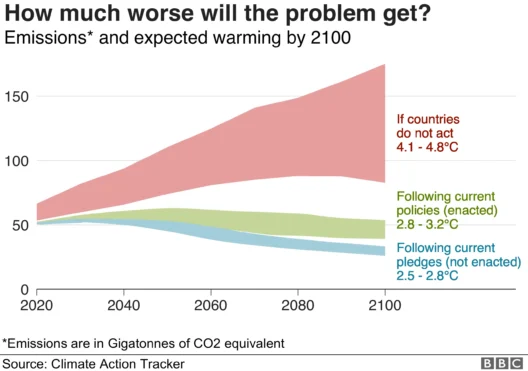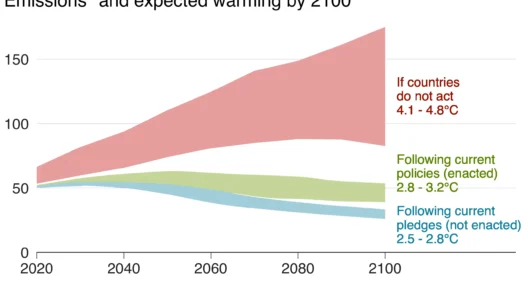Forests cover approximately 31% of the Earth’s land area, and they play a monumental role in regulating the planet’s climate. Every living creature on Earth relies on them, yet the question remains: can these natural titans effectively combat global warming, and will humanity lend them the support they need to continue their noble efforts? This article delves deep into the remarkable functions of forests in mitigating climate change and highlights the pressing challenges they face.
Consider the captivating paradox of a single tree. Standing tall, it symbolizes resilience against climate change, yet it is feeble in the face of extensive deforestation and degradation. Each year, millions of acres of forest are lost due to industrialization, agriculture, and urban expansion. This rampant loss releases vast amounts of carbon dioxide—one of the primary culprits of global warming—back into the atmosphere, exacerbating an already critical situation. How can we expect our forests to take on the Herculean task of fighting climate change if we continue to degrade their very existence?
Forests act as carbon sinks, absorbing carbon dioxide during photosynthesis and storing carbon in their biomass and soil. According to scientific research, they sequester approximately 2.6 billion metric tons of carbon dioxide annually. This process not only reduces the concentration of greenhouse gases in the atmosphere but also mitigates the adverse effects of climate change on ecosystems. One might ponder how much more effective these green guardians could be if humanity shifted its collective approach towards forest conservation and restoration.
In addition to carbon storage, forests facilitate the regulation of the water cycle. They intercept rain, reduce runoff, and help replenish groundwater supplies. Trees play a crucial role in transpiration, where water is released into the atmosphere—contributing to cloud formation and precipitation. Disruption of forests can lead to altered weather patterns, increased flooding, and droughts in other areas. If we were to reimagine urban landscapes, what innovative solutions could we unveil by integrating more green spaces into our cities?
Moreover, forests are vital to maintaining biodiversity. They serve as habitats for over 80% of terrestrial species of animals, plants, and fungi. By protecting forests, we are also safeguarding the myriad of species that contribute to vital ecosystem services. The upcoming challenge is striking a balance between human needs and the intrinsic value these ecosystems provide. Can humanity rise to the occasion by implementing sustainable practices that honor both nature and societal development?
Nevertheless, the threats to forests today are manifold. Aside from deforestation driven by agriculture and urbanization, the impacts of climate change itself are increasingly apparent. Rising temperatures, changing precipitation patterns, and more frequent extreme weather events contribute to forest stress, making them susceptible to pests, diseases, and wildfires. With the peril of wildfires escalating, what proactive measures can be instigated to prevent such tragedies, ensuring the longevity of our forests?
Community engagement plays a pivotal role in fostering a collective responsibility towards forest conservation. Initiatives aimed at reforestation, afforestation, and sustainable forestry practices are gaining traction across the globe. Individuals participating in local planting days or school programs that educate youth about the importance of forests contribute to a greater understanding and appreciation of these ecosystems. Is it time for a cultural renaissance that elevates environmental stewardship as a core value in our communities?
The advancement of technology also offers promising avenues for forest conservation. Drones and satellite imagery can monitor forest health and assess changes over time, enabling targeted interventions. Additionally, data science plays a crucial role in predicting deforestation trends and formulating effective policies. If technology can be harnessed to protect our planet, how can we encourage wider adoption and integration of these innovations into sustainable practices?
Ultimately, it is essential to recognize forests not merely as resources but as indispensable allies in the fight against global warming. The complex interdependencies between humans and forests necessitate a paradigm shift towards a sustainable future. Even as urban sprawl continues to encroach upon natural habitats, enhancing the connection between communities and their forested environments is vital for long-term success.
To truly appreciate the magnificence of forests, it is imperative that we embrace a diverse range of strategies to safeguard them. Enhanced legal frameworks, sustainable economic models, and collaborative international efforts must converge to establish a concerted response to forest conservation. Each individual’s choice—whether consuming sustainably sourced products or volunteering for reforestation projects—can ripple outward, leading to broader systemic change. How will you contribute to this collective endeavor of preserving our planet’s green giants?
The responsibility rests on mankind to ensure that these natural superheroes are afforded the protection they so urgently require. As we confront the multi-faceted challenges posed by climate change, let us unite and harness the power of forests—nature’s superheroes—to reverse the trend of global warming and sustain our planet for generations to come.




